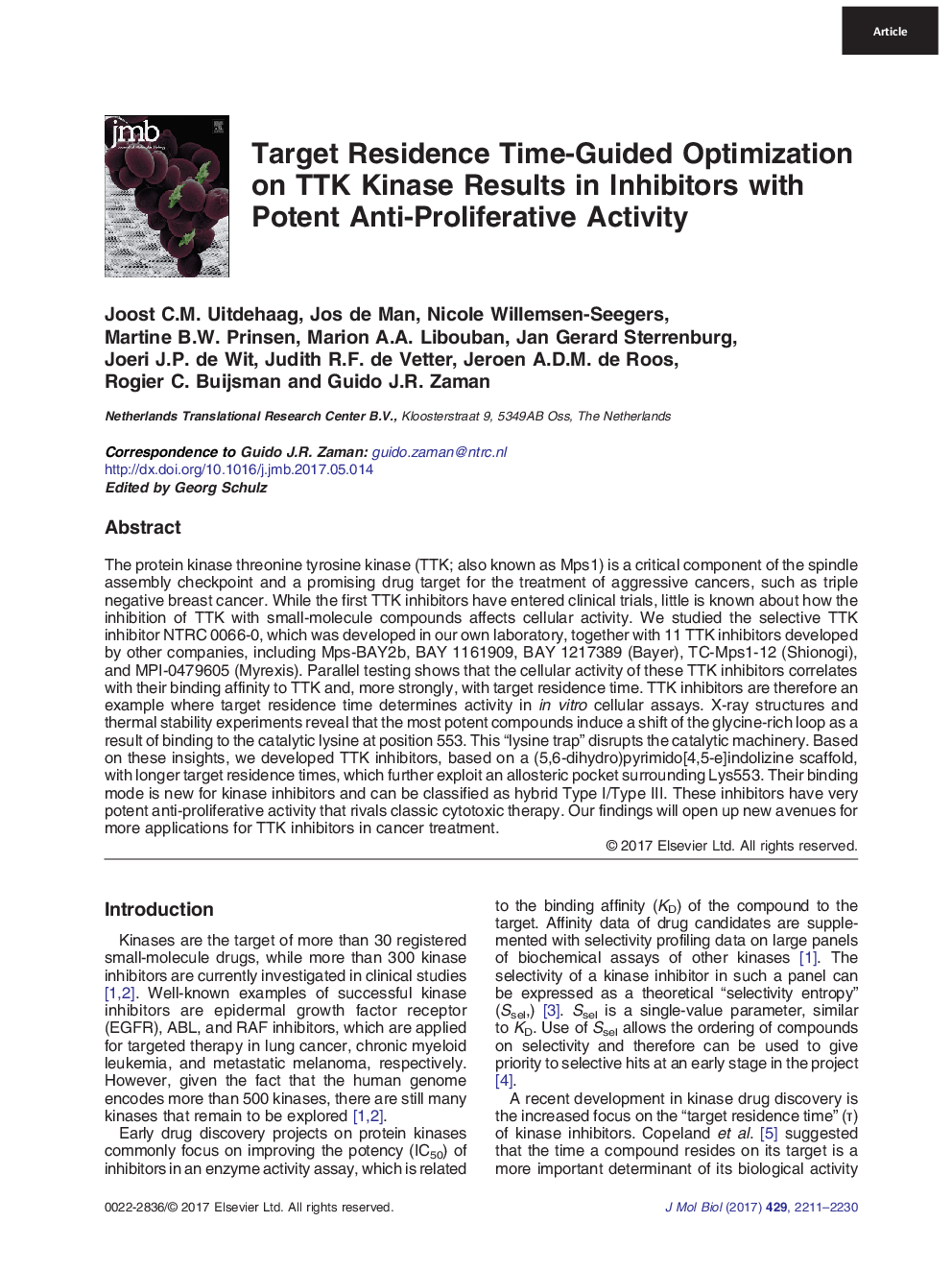| کد مقاله | کد نشریه | سال انتشار | مقاله انگلیسی | نسخه تمام متن |
|---|---|---|---|---|
| 5533191 | 1402106 | 2017 | 20 صفحه PDF | دانلود رایگان |

- We compared 12 TTK inhibitors from different chemical classes head-to-head.
- Target residence time of TTK inhibitors correlates with anti-proliferative activity.
- The most potent inhibitors trap Lys553 and induce a shift in the glycine-rich loop.
- Novel inhibitors were designed that bind in a hybrid type I/III binding mode.
- Novel TTK inhibitors belong to the most potent anti-proliferative compounds known.
The protein kinase threonine tyrosine kinase (TTK; also known as Mps1) is a critical component of the spindle assembly checkpoint and a promising drug target for the treatment of aggressive cancers, such as triple negative breast cancer. While the first TTK inhibitors have entered clinical trials, little is known about how the inhibition of TTK with small-molecule compounds affects cellular activity. We studied the selective TTK inhibitor NTRC 0066-0, which was developed in our own laboratory, together with 11 TTK inhibitors developed by other companies, including Mps-BAY2b, BAY 1161909, BAY 1217389 (Bayer), TC-Mps1-12 (Shionogi), and MPI-0479605 (Myrexis). Parallel testing shows that the cellular activity of these TTK inhibitors correlates with their binding affinity to TTK and, more strongly, with target residence time. TTK inhibitors are therefore an example where target residence time determines activity in in vitro cellular assays. X-ray structures and thermal stability experiments reveal that the most potent compounds induce a shift of the glycine-rich loop as a result of binding to the catalytic lysine at position 553. This “lysine trap” disrupts the catalytic machinery. Based on these insights, we developed TTK inhibitors, based on a (5,6-dihydro)pyrimido[4,5-e]indolizine scaffold, with longer target residence times, which further exploit an allosteric pocket surrounding Lys553. Their binding mode is new for kinase inhibitors and can be classified as hybrid Type I/Type III. These inhibitors have very potent anti-proliferative activity that rivals classic cytotoxic therapy. Our findings will open up new avenues for more applications for TTK inhibitors in cancer treatment.
Graphical Abstract116
Journal: Journal of Molecular Biology - Volume 429, Issue 14, 7 July 2017, Pages 2211-2230